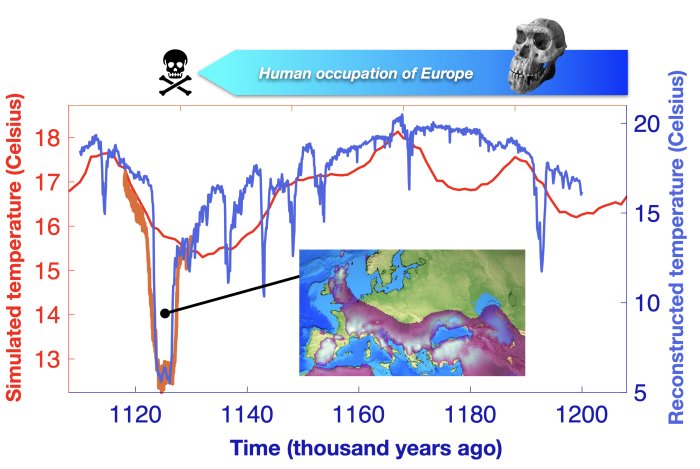A profound and intricate relationship exists between freshwater influxes and the thermohaline circulation of the North Atlantic Ocean. This dynamic interaction has far-reaching implications not only for marine ecosystems but also for global climate patterns, particularly as we analyze historical shifts. A close examination reveals a compelling narrative of how freshwater dynamics contribute to significant cooling events in the North Atlantic, ultimately affecting human habitation and ecological systems.
The North Atlantic Ocean is a fundamental component of Earth’s climate system. It serves as a conduit for the thermohaline circulation, the global conveyor belt characterized by dense saltwater sinking in polar regions while warmer, lighter water flows poleward. This process is largely driven by salinity and temperature gradients. However, freshwater inputs—stemming primarily from glacial melt, river runoff, and precipitation—can drastically alter this delicate balance. Such perturbations can engender a cascade of climatic repercussions that could lead to dramatic cooling events.
One of the most significant cooling events in this region occurred several millennia ago, an episode that profoundly impacted human occupation patterns across Europe and beyond. The role of freshwater in this event invites a renewed examination of the North Atlantic’s climatology. When large volumes of freshwater are introduced into the sea, they can disrupt normal oceanic circulation patterns. This is due to the reduction in salinity, which diminishes the water’s density, inhibiting the vital sinking process that fuels deep ocean currents. Consequently, the cessation of these currents can provoke substantial cooling over extensive areas, particularly in the North Atlantic region.
Empirical data derived from paleoclimatology illustrates this phenomenon with remarkable clarity. Ice core samples reveal sharp transitions in temperature, highlighting periods of drastic cooling that correlate with increased freshwater influxes. Notably, the Younger Dryas period—an abrupt return to glacial conditions occurring approximately 12,900 to 11,700 years ago—was precipitated by massive discharges from the Laurentide Ice Sheet, releasing copious amounts of freshwater into the North Atlantic. This influx not only interrupted the warm Gulf Stream but also instigated a widespread climatic reorganization that had dire implications for contemporary human populations, who had begun to populate northern Europe.
The implications of freshwater-induced cooling extend beyond mere temperature reductions; they also engender ecological upheaval. The North Atlantic’s marine ecosystems are intricately intertwined with climate dynamics. As water temperatures plummet, the biological productivity of the region can experience drastic shifts. Cold-water fish species may thrive, while warm-water counterparts dwindle. Such changes can disrupt traditional fishing practices, compelling adaptive strategies among human populations reliant on these critical resources. This relationship illustrates the complex interdependencies within the climate system, demonstrating that shifts in one sector can have reverberating effects throughout various ecological and human health paradigms.
Moreover, the anthropogenic dimension cannot be overlooked when assessing the future of the North Atlantic’s climatic stability. Climate change is poised to accelerate glacial melting and enhance freshwater input, challenging our previous understandings of climatic patterns. As we witness unprecedented changes in the Earth’s cryosphere, the potential for renewed episodes of cooling looms large on the horizon. Understanding the historical context of these transformations is imperative for modern climatology and for predicting future scenarios. Each new glacial melt event carries with it the latent potential for significant alterations in North Atlantic currents, which may well echo the temperature drop experienced during the Younger Dryas.
Considering the potential consequences of freshwater influxes on North Atlantic climate, it becomes increasingly essential for scientists and educators to engage in interdisciplinary dialogue. The convergence of oceanography, climatology, and ecology illuminates the tangled web of dependencies that sustain life on Earth. By fostering collaborative research efforts, we can gain a more nuanced understanding of how shifting freshwater pathways may dictate future climate regimes.
Additionally, the role of public awareness and engagement in climate dialogues remains paramount. Outreach initiatives that communicate the intricacies of the North Atlantic cooling dynamics could empower communities to adapt to emerging challenges. Understanding the climatic implications of freshwater anomalies offers a robust framework for enacting resilient ecological practices and policy decisions globally.
In conclusion, the cooling power of freshwater in the North Atlantic is a testament to the profound interconnectedness of Earth’s climate systems. As humanity wrestles with the specter of climate change, reevaluating the historical significance of freshwater dynamics becomes crucial. The time has come to scrutinize the interplay between freshwater influx and ocean circulation more diligently. Only then can we begin to anticipate the consequences of ongoing climatic shifts and strive towards a sustainable future. The North Atlantic, with its vast influences and mysteries, urges us to rethink, reimagine, and, ultimately, respect the delicate balance sustaining our planet.












